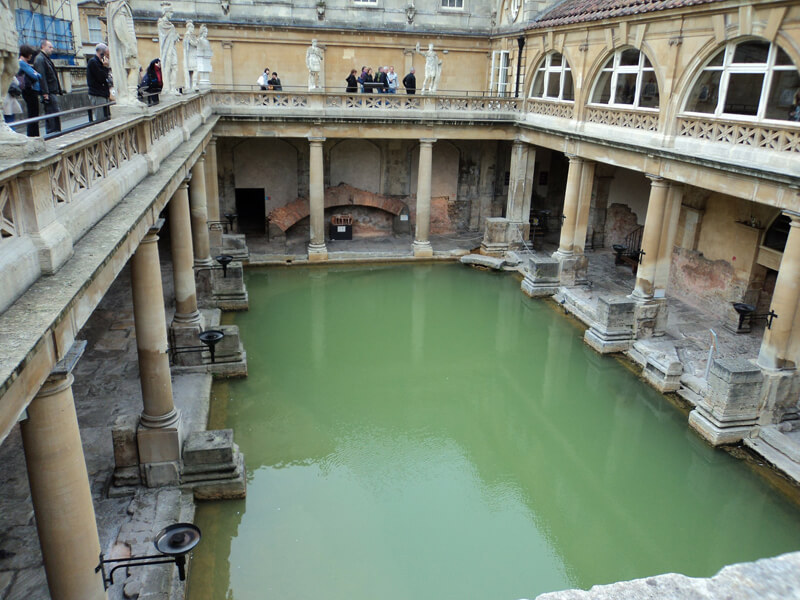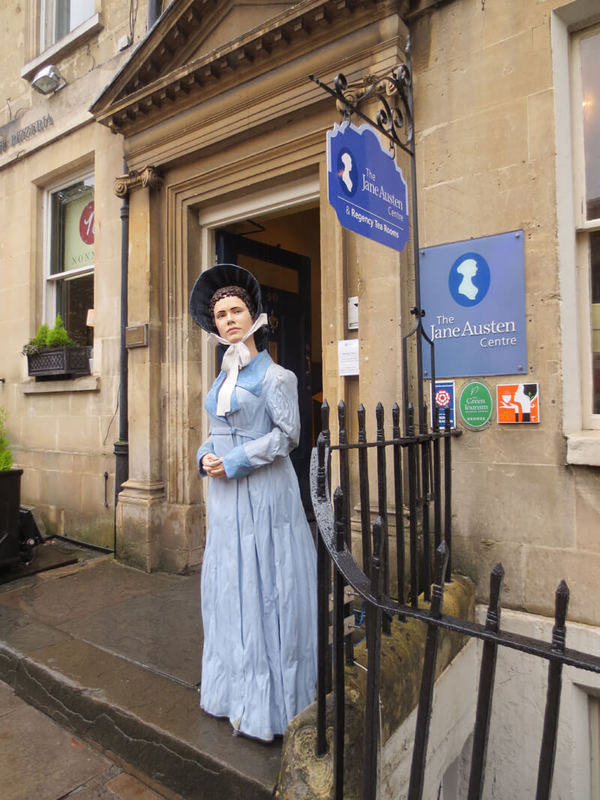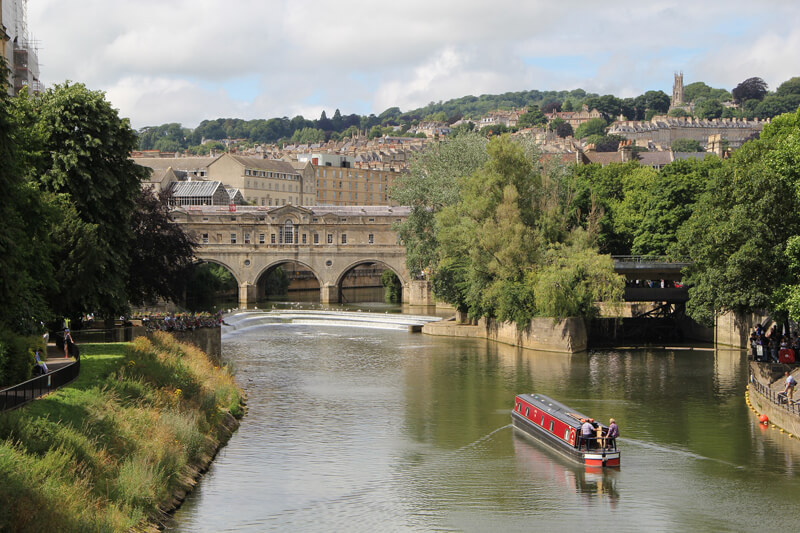 Bath is an elegant city. It is a place for frock coats and gowns and afternoon tea. Wander into Bath Abbey and marvel at its buttresses, hear glorious music echo round its rafters. Visit the Roman Baths, forgive the smell and imagine the hoi polloi lounging in its steaming waters. Take tea in the Pump Rooms, where the piano tinkles and cream cakes are piled high, and see yourself in a Jane Austen novel. Take your swimsuit, return to the delights of the twenty-first century, and lie in the warm waters of the Thermae Bath Spa with steam rising and sky stretched above you.
Bath is an elegant city. It is a place for frock coats and gowns and afternoon tea. Wander into Bath Abbey and marvel at its buttresses, hear glorious music echo round its rafters. Visit the Roman Baths, forgive the smell and imagine the hoi polloi lounging in its steaming waters. Take tea in the Pump Rooms, where the piano tinkles and cream cakes are piled high, and see yourself in a Jane Austen novel. Take your swimsuit, return to the delights of the twenty-first century, and lie in the warm waters of the Thermae Bath Spa with steam rising and sky stretched above you.
Come back down to earth – and step away from the crowds. Wander down a passageway or two. Risk getting lost. For the hidden delights of Bath lie in her back streets, and you’ve walking to do to see them. Peer through the railings of the old Cross Bath, disused now but once its pongy waters were thought to cure paralysis, skin conditions and gout. Potter about the lanes, explore the hidden squares and passageways. Imagine – not so long ago – this was the world of urchins and scallywags. Women of a certain profession stood in the corners and beckoned you in. Stroll through the old market – so civilized now but once it echoed with the cries of traders and stank of meat.
 Pause at Pulteney Bridge. You may dress in Jane Austen finery here. Indeed, if you want to go in the shops it is possibly obligatory, for I suspect that anyone with a backpack is exiled to Australia if they set foot in one.
Pause at Pulteney Bridge. You may dress in Jane Austen finery here. Indeed, if you want to go in the shops it is possibly obligatory, for I suspect that anyone with a backpack is exiled to Australia if they set foot in one.
Then take off your gowns and step back into the mayhem. Slip down Westgate Street to find the Royal Hospital for Rheumatic Diseases, established here in 1739. When it was first opened patients had to pay £3 on arrival – the fare for their transport home, or burial (often the latter). Beneath a nearby wall – there is a small plaque here to remind you – are remains of the medieval city. Just think of the decades of men and women who have tramped up this street.
Stride up Milson Street. It is full of fashionable shops now. Look up – for signs high on the walls direct you to the ‘Circulating Library and Reading Rooms’ and, close by, to the Brush Manufacturers: factories cheek by jowl with learning. If you carry on up the hill you’ll find the Fashion Museum and Assembly Rooms. They have a ‘corsets and crinolines’ display where you can try on reproduction garments. If you thought winklepickers and roll-ons were uncomfortable, you’ll be humbled to think that men and women had to spend their days trussed up in clothes like this.
 You’ve made it to the Royal Crescent, with glorious sweep of elegant houses. Here, if you wish, you can don your imaginary dresses and top hats again, and lie on the grass to watch the sun go down. Maybe a twenty-first century balloon will sweep across the sky above you, wake you with the whooshing from its burners. If you have another day here, there are few better ways to see this lovely city than from the sky.
You’ve made it to the Royal Crescent, with glorious sweep of elegant houses. Here, if you wish, you can don your imaginary dresses and top hats again, and lie on the grass to watch the sun go down. Maybe a twenty-first century balloon will sweep across the sky above you, wake you with the whooshing from its burners. If you have another day here, there are few better ways to see this lovely city than from the sky.
But this evening you have no time. For, if you are well organized, you have tickets for the theatre. Pause, on your way back, by two tiny buildings in Queens Park Place: these are the only surviving sedan chairmen’s houses. Men would sit with their pipes and wait for business, much as taxi drivers do today. Your feet may be aching by now, but think how their lives must have been, running backwards and forwards through the streets of Bath with those too idle (or to rich) to walk. So much has changed, yet these magical corners in Bath remind us of the history than lives on in its graceful streets.
Read Jo Carroll’s review about Combe Grove Manor Hotel











